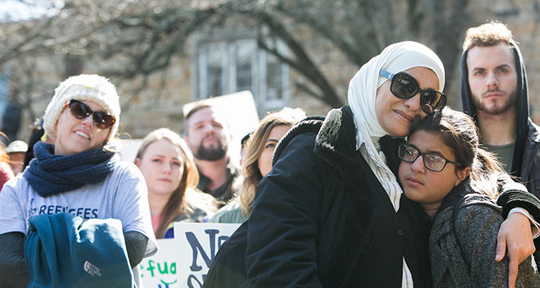New York, Feb 16: Americans are now getting warmer towards various religious groups, including Hindus and Muslims, than they did a few years ago, a new survey has found, months after the presidential polls that had polarised the nation.

The Pew Research Center survey asked Americans to rate a variety of groups on a "feeling thermometer" ranging from 0 to 100, with US adults giving nearly all groups warmer ratings than they did in a June 2014 survey.
The survey found that while Americans still feel coolest toward Muslims, ratings for the community increased from a "chilly 40 degrees" to a more neutral rating of 48.
Jews and Catholics continue to be among the groups that receive the warmest ratings – even warmer than in 2014.
Evangelical Christians, rated relatively warmly at 61 degrees, are the only group for which the mean rating did not change since the question was last asked in 2014.
Most groups rate Buddhists and Hindus fairly warmly, it said, adding that Americans' feelings toward Mormons and Hindus have shifted from relatively neutral places on the thermometer to somewhat warmer ratings of 54 and 58 respectively.
However, the mean ratings given to particular religious groups still vary widely depending on who is being asked.
Young adults aged 18 to 29 expressed warmer feelings toward Muslims than older Americans did.
These are among the main findings of the Pew survey of 4,248 adults conducted from January 9 and 23, just around the time of the inauguration of US President Donald Trump.
The survey also finds wide variation in the ratings that US religious groups give one another.
While for the most part Jews and Christians tend to rate each other warmly, atheists and evangelicals continue to view each other in a negative light.
The report added that both Democrats and Republicans now express warmer views toward a variety of groups than they did in June 2014, but large gaps remain between partisans in their views of a few of these groups.
Democrats and those who lean toward the Democratic Party express somewhat warm feelings toward Muslims, giving them an average rating of 56 on the feeling thermometer, up from 47 in 2014.
Republicans and those who lean Republican, meanwhile, rate Muslims at a much cooler 39 degrees, though this is up 6 degrees from 2014.





Comments
Add new comment